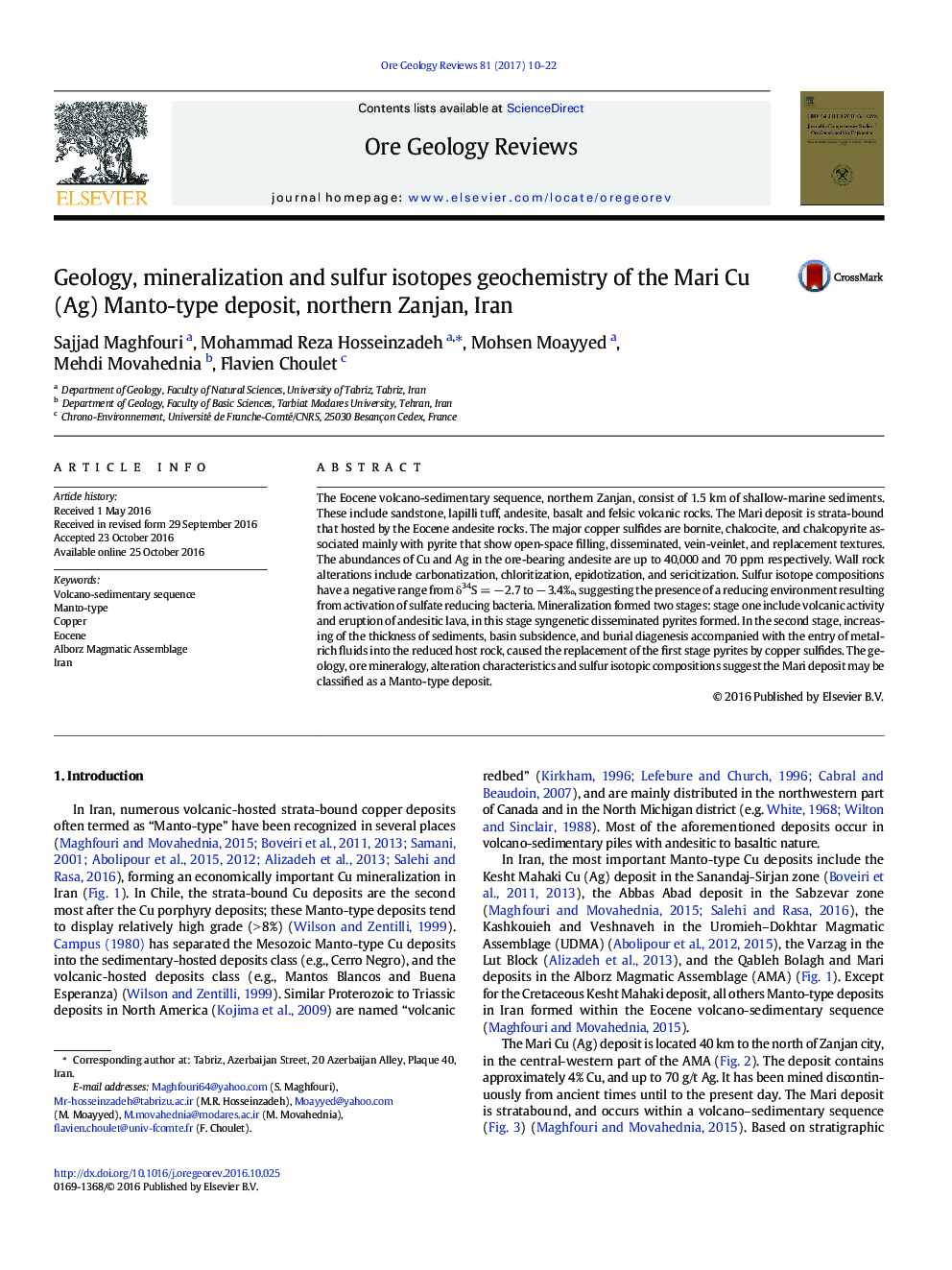| Article ID | Journal | Published Year | Pages | File Type |
|---|---|---|---|---|
| 4696778 | Ore Geology Reviews | 2017 | 13 Pages |
•The Mari deposit is strata-bound that hosted by the Eocene andesite rocks.•Sulfur isotope compositions have a negative range from δ34S = − 2.7 to − 3.4‰, suggesting the presence of a reducing environment resulting from activation of sulfate reducing bacteria.•The geology, ore mineralogy, alteration characteristics and sulfur isotopic compositions suggest the Mari deposit is similar with Chilean Manto-type deposit.
The Eocene volcano-sedimentary sequence, northern Zanjan, consist of 1.5 km of shallow-marine sediments. These include sandstone, lapilli tuff, andesite, basalt and felsic volcanic rocks. The Mari deposit is strata-bound that hosted by the Eocene andesite rocks. The major copper sulfides are bornite, chalcocite, and chalcopyrite associated mainly with pyrite that show open-space filling, disseminated, vein-veinlet, and replacement textures. The abundances of Cu and Ag in the ore-bearing andesite are up to 40,000 and 70 ppm respectively. Wall rock alterations include carbonatization, chloritization, epidotization, and sericitization. Sulfur isotope compositions have a negative range from δ34S = − 2.7 to − 3.4‰, suggesting the presence of a reducing environment resulting from activation of sulfate reducing bacteria. Mineralization formed two stages: stage one include volcanic activity and eruption of andesitic lava, in this stage syngenetic disseminated pyrites formed. In the second stage, increasing of the thickness of sediments, basin subsidence, and burial diagenesis accompanied with the entry of metal-rich fluids into the reduced host rock, caused the replacement of the first stage pyrites by copper sulfides. The geology, ore mineralogy, alteration characteristics and sulfur isotopic compositions suggest the Mari deposit may be classified as a Manto-type deposit.
